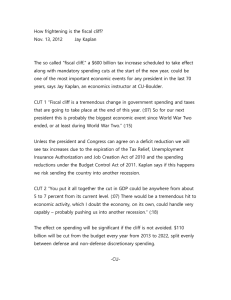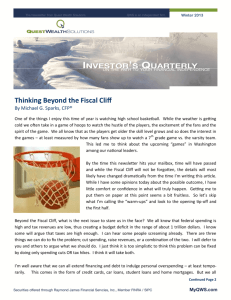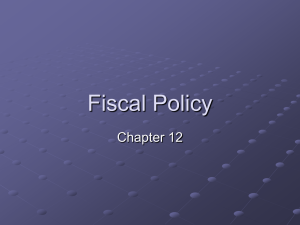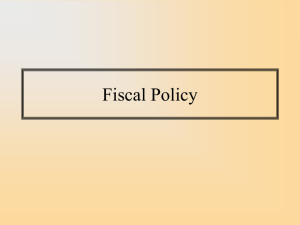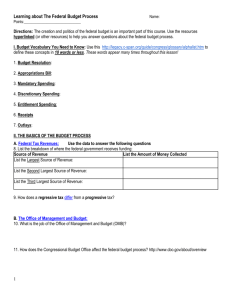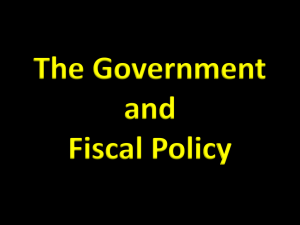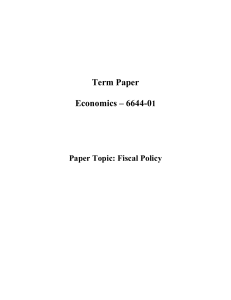One A S Y M P O S I U M...
advertisement
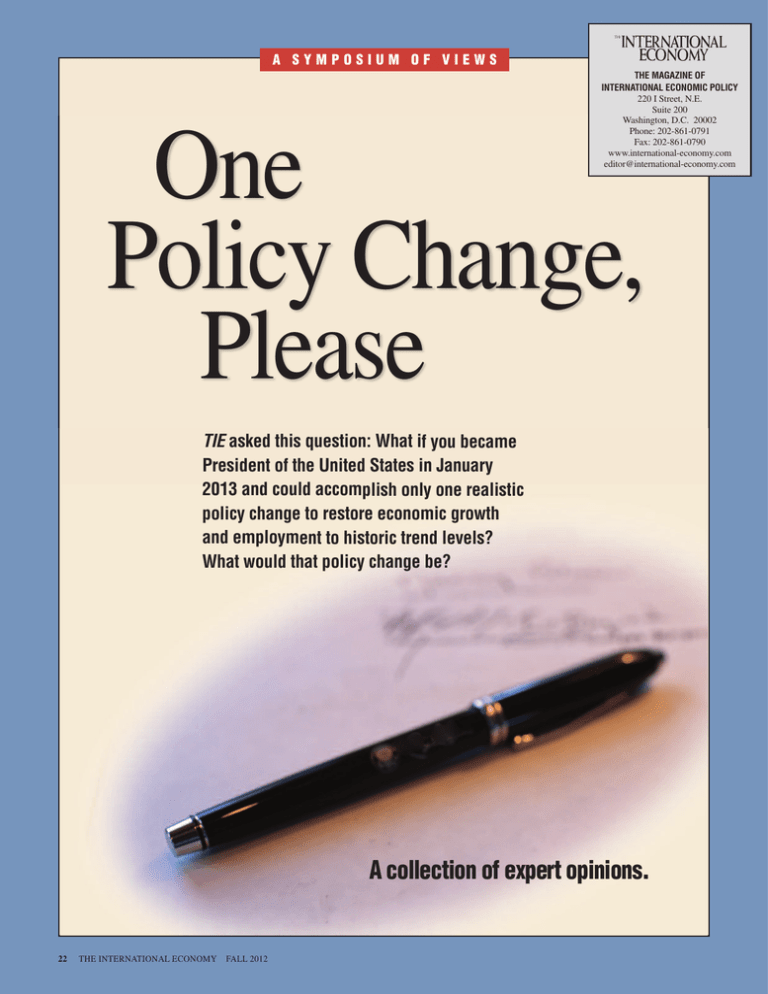
A SYMPOSIUM OF VIEWS THE MAGAZINE OF INTERNATIONAL ECONOMIC POLICY 220 I Street, N.E. Suite 200 Washington, D.C. 20002 Phone: 202-861-0791 Fax: 202-861-0790 www.international-economy.com editor@international-economy.com One Policy Change, Please TIE asked this question: What if you became President of the United States in January 2013 and could accomplish only one realistic policy change to restore economic growth and employment to historic trend levels? What would that policy change be? A collection of expert opinions. 22 THE INTERNATIONAL ECONOMY FALL 2012 Remove the fiscal Achieve a bipartisan cliff scenario. Grand Bargain. RUDOLPH G. PENNER STUART E. EIZENSTAT Institute Fellow, Urban Institute, and former Director, Congressional Budget Office Partner, Covington & Burling, LLP, former Chief White House Domestic Policy Adviser to President Carter, and former Deputy Secretary of the Treasury B T usinesses are delaying investment and employment decisions and retarding the recovery because the next few months are filled with unprecedented policy uncertainty. By the end of January we will know whether we have fallen off the so-called fiscal cliff—a precipice that involves the largest tax increase since World War II, severe spending restraint imposed primarily by a mindless across-the-board cut in almost all budget accounts, and a major cut in physician reimbursements for Medicare. If we do fall off the cliff, the single most important thing that a president can do is to urge a restoration of most of the tax and spending policies of 2012. Otherwise we face a significant recession. If, by Inauguration Day, Congress has already extended most 2012 policies, it will not have ended policy uncertainty. We know that current fiscal policies are not sustainable in the long run, but we do not know what will replace them. Therefore, it will not be enough to keep most 2012 policies in place. However the extension is accomplished, it must be supplemented with a presidential announcement that on March 1 he will convene a summit of congressional leaders and the chairmen and ranking members of major taxing and spending committees. The summit will not adjourn until there is an agreement to sufficient deficit reduction to stabilize the debt-to-GDP ratio by 2024. The approach is similar to that taken with the Andrews Air Force Base summit of 1990. Cynics will note that the policy package agreed to at Andrews was subsequently voted down by Congress. But the meeting provided leaders with enough information to make changes in the package that were eventually adopted. The result was a very significant deficit reduction that contributed to balancing the budget in the late 1990s. he president who takes the oath of office in January will face a daunting challenge: there are no global drivers of world GDP growth. Key emerging countries such as China, India, and Brazil are simultaneously slowing down, the eurozone is in a recession, and the United States suffers subpar growth. The International Monetary Fund has warned of renewed global recession risks after the world has just extracted itself from the Great Recession of 2008–2009. Several steps need to be taken immediately. First, call an immediate G-20 meeting in the president’s first weeks in office to develop a consensus for synchronized action, similar to the 2009 G-20 summit, in which joint action prevented a global depression. Second, reinvigorate global trade talks, not by trying to resuscitate the dormant Doha Round, but by announcing the start of negotiations for a U.S.-EU Free Trade Agreement to create a tariff-free, barrier-free trans-Atlantic marketplace, and then open the agreement to any countries that wish to take on the comprehensive obligations, and by rapidly completing the Trans-Pacific Partnership negotiations. But the single most important action is for the president to fashion a bipartisan Grand Bargain with the congressional leadership that accomplishes the following: ■ Avoids the “fiscal cliff” facing the United States at the end of 2012 with the expiration of the Bush-era tax cuts and the automatic sequestration of over $1 trillion in spending, which if not averted would shut down the nascent recovery of the United States, the world’s largest economy; ■ Extends the debt limit, without the cataclysmic battle that almost brought the United States to its knees in 2011; ■ Sets the framework for a genuine $4 trillion to $6 trillion ten-year deficit reduction package, bringing our total federal debt to a manageable level of 60 percent of GDP. This can be accomplished by a tax reform package that lowers individual and corporate rates by eliminating loopholes and subsidies while increasing revenues; encourages American corporations to bring home their foreign FALL 2012 THE INTERNATIONAL ECONOMY 23
